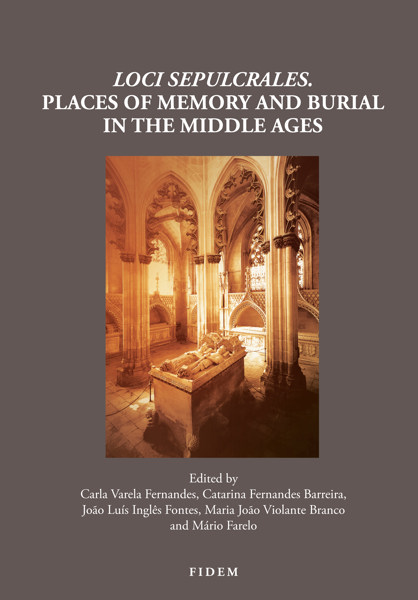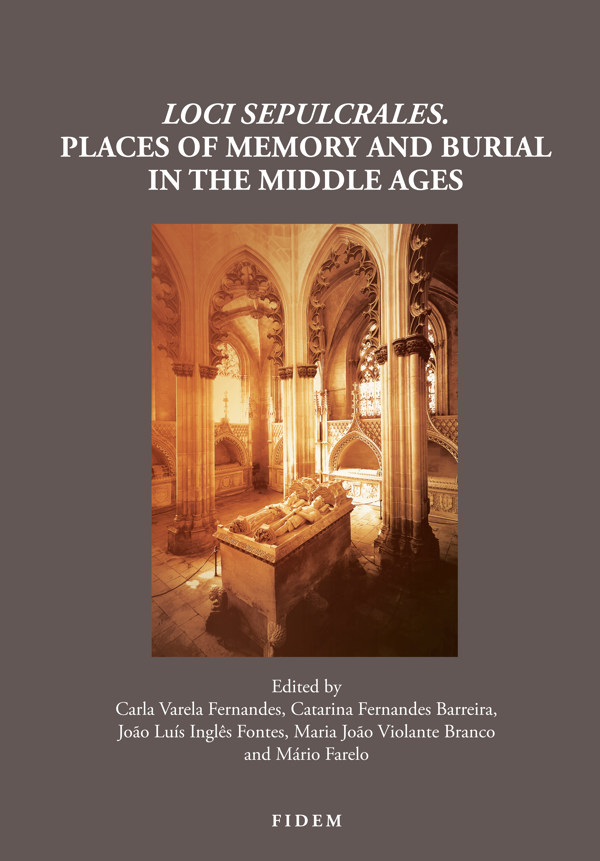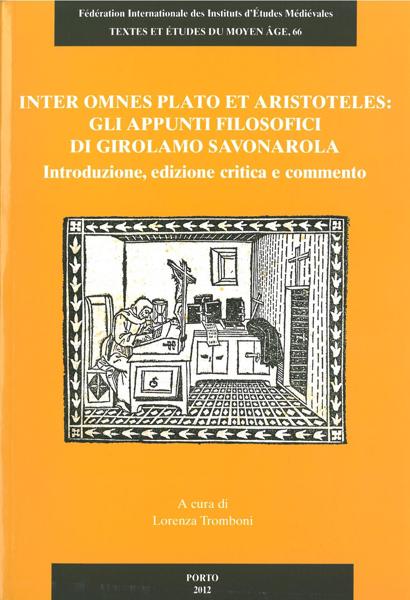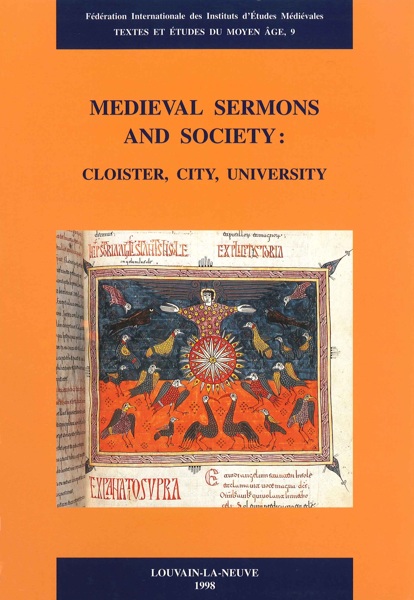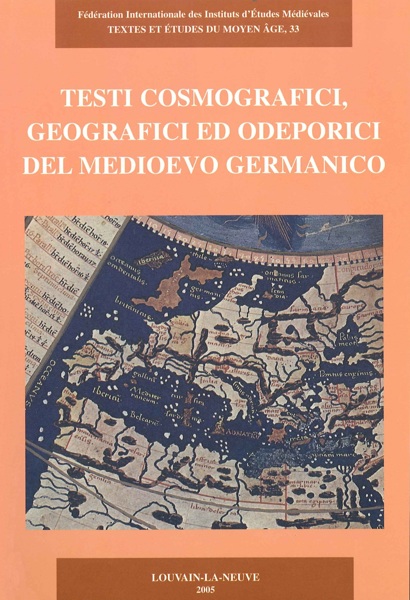
Loci Sepulcrales
Places of memory and burial in the Middle Ages
Carla Varela Fernandes, Catarina Fernandes Barreira, João Luís Inglês Fontes, Maria Joao Branco, Mario Farelo (eds)
- Pages: xvii + 594 p.
- Size:165 x 240 mm
- Illustrations:12 b/w, 115 col., 9 maps b/w
- Language(s):English, French, Spanish
- Publication Year:2024
- € 75,00 EXCL. VAT RETAIL PRICE
- ISBN: 978-2-503-60658-3
- Paperback
- Available
- € 75,00 EXCL. VAT RETAIL PRICE
- ISBN: 978-2-503-60659-0
- E-book
- Available
Throughout the Middle Ages, the choice of a particular burial place remains a fundamental question in someone’s live.
Contributions by 22 authors, while the book is edited by Carla Varela Fernandes (Assistant professor at NOVA FCSH), Catarina Fernandes Barreira (Research fellow at NOVA FCSH), João Luís Fontes (Assistant professor at NOVA FCSH), Maria João Branco (Associate professor at NOVA FCSH) and Mário Farelo (Assistant researcher at NOVA FCSH), all members of the Institute for Medieval Studies.
Assembling the contributions of twenty-two authors, this volume aims at revisiting the question of the choice of burial sites throughout the Middle Ages, in their political, emotional, and devotional dimensions, across a wide chronology and in a vast palette of different social statuses. The choice of a burial site inevitably reflets very important statements, made by the living persons, not only regarding what they wished the memory of their passage on Earth to be, but equally enlightening us on what their concern for the future of their souls was and how it should be cared for, in the afterlife.
The first part of this volume is devoted to royal pantheons, considering their development and relevance in the construction of royal legitimacy. Kings and Queens were not the only ones considering their lineage and personal memory: noblemen, ecclesiastics, rich tradesmen, and their wives and daughters, were also involved in a world of changing tendencies, which are dealt with in the second part of the book. The third and last part looks at the strategies and interconnection between building a burial site and constructing collective memories, whether in stone or in writing through the performing influence of rituals, images, or symbols.
This book proposes, therefore a whole new set of approaches on the subject, addressed either in interdisciplinary and all-around syntheses or via analysis of specific case-studies, looking at panteons and other burial sites as the important witnesses of the lives, emotions, and devotions of the medieval society they served.
Contributors to this volume are Xavier Barral i Altet, Catarina Fernandes Barreira, Thiago José Borges, Maria Helena Cruz Coelho, Frederica Cosenza, Antonio Pio de Cosmo, Lorenzo Curatella, Mário Farelo, José Romón González de la Cal, Linsy Grant, Laurent Hablot, Orlindo Jorge, Emma Lano Martínez, Christian de Mérindol, Sonia Morales Cano, Jorge Morín Pablos, Pedro Redol, Martina Saltamacchia, Isabel Sánchez Ramos, Lydwine Scordia, Rosa Smurra and Christian Steer.
Preface
I - Royal Pantheons (5th-15th century)
- Emma Liaño Martinez (Profesora Catedrática de Historia del Arte. Universidad de Tarragona), El Panteón Real de Poblet. Afirmación de la monarquia e innovación artística
- Sonia Morales Cano (Profesora Universidad de Castilla-La Mancha), Discursos de la memoria: la catedral primada de España como panteón real en la Baja Edad Media y su repercusión en los mausoleos de prelados y nobles
- Pedro Redol (Senior Official Monastery of Batalha), Orlindo Jorge (Independent researcher), The royal funerary chapels of Batalha: prestige, innovation, and identity (1415-1515)
- Christian de Mérindol (Ancien Conservateur au Musée des monuments français), La Necropole de Saint-Denis de Louis VII à Saint Louis. Nouvelle synthèse.
- Lindy Grant (Professor of Medieval History, University of Reading), Blanche of Castile, St Louis and the concept of the family mausoleum in Capetian France: Saint-Denis, Royaumont and Maubuisson.
- Lydwine Scordia (Maître de conférences HDR, Université de Rouen), Le tombeau de Louis XI à Notre-Dame de Cléry: un unicum dans l’histoire de l’art funéraire royal
II. Burial strategies: from rural to urban contexts
- Isabel Sánchez Ramos (University College London, Institute of Archaeology), Jorge Morín Pablos (AUDEMA. Auditores de Energía y Medio Ambiente, Madrid) and José Ramón González de la Cal (Escuela de Arquitectura de Toledo, UCLM), El edificio funerario tardoantiguo de Los Hitos en Arisgotas (Toledo, España). Un panteón de época visigoda
- Mário Farelo (Assistant Researcher, NOVA FCSH), Une cité de Saints. La ville de Lisbonne comme lieu de sacralisation de la guerre, XIIe-XVe siècles
- Federica Cosenza (Postgraduate, Università degli Studi La Sapienza), Sepolture di Prestigio a Roma nel Medioevo: La Media Elite
- Lorenzo Curatella (PhD, Università degli Studi La Sapienza), Sepolture di prestigio a Roma nel Basso Medioevo: Gli Ecclesiastici
- Rosa Smurra (Associate Professor, University of Bologna), Social mobility and funerary monuments in the first half of the fourteenth-century in Santa Chiara, Naples
- Martina Saltamacchia (Associate Professor, Charles & Mary Caldwell Martin Professor of History), Snakes, Razas, and the Prince’s Tomb: Gian Galeazzo Visconti and the Cathedral of Milan
- Christian Steer (Visiting Fellow, University of York), Bones of Benefactors: Burying the Dead in Grey Friars Church London
III – Memory, Representations and Texts
- Maria Helena da Cruz Coelho (Professora Catedrática, Universidade de Coimbra), A morte e a última morada dos reis: paradigma e memória
- Xavier Barral i Altet (Professeur des Universités, Université Rennes 2), Le rôle mémorial et funéraire de la broderie de Bayeux : à propos du tombeau-mausolée de la scène d’Aelfgyva et le clerc.
- Laurent Hablot (Directeur d'études, EPHE), L’héraldique et la mort. Formes et fonctions de l’héraldique dans le contexte funéraire
- Catarina Fernandes Barreira (Research Fellow, NOVA FCSH), Requiescant in pace. Death and memory in the Monastery of Alcobaça based on its liturgical codices
- Antonio Pio de Cosmo (Università di Modena e Reggio Emilia, Italia / ISACCL, Bucarest, Romania), I riti in limine vitae degli Augusti. “Manipolazione rituale” e partecipazione corale nelle cerimonie del trapasso dell’imperatore celebrate fra IV e VI secc.
- Thiago José Borges (Doutor em História, docente do Instituto Federal de Brasília), De Locis Sanctis: textualidade, tradição e formas de representação.
